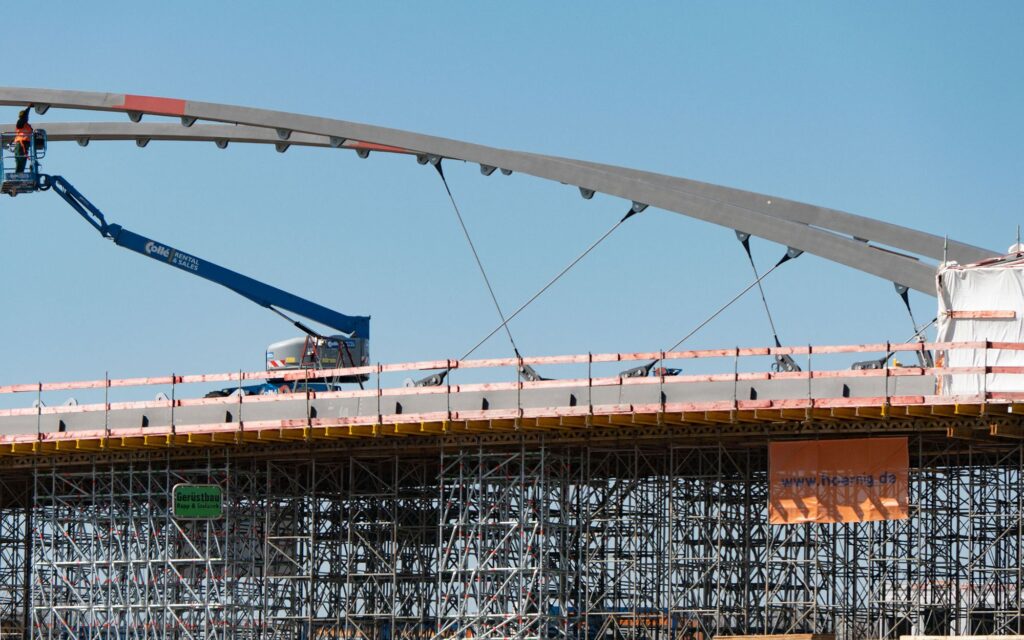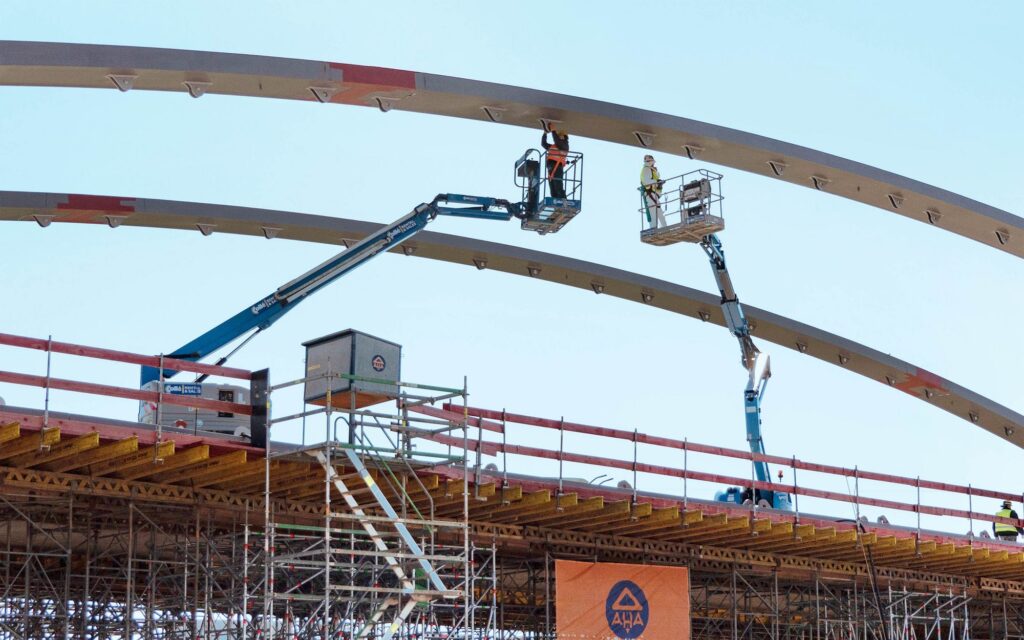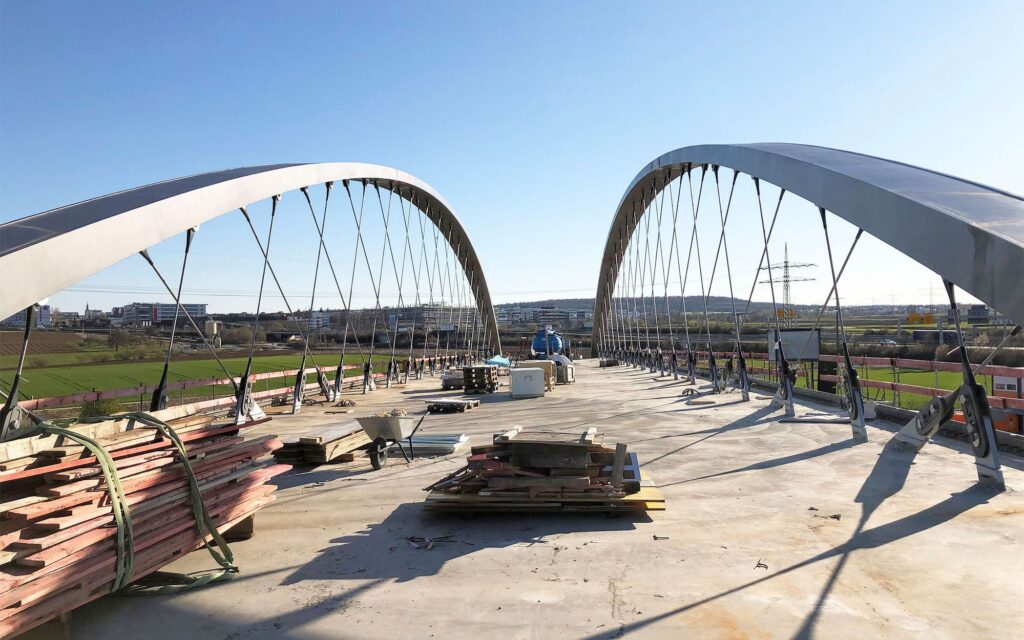A new bridge over the A8, one of Germany’s busy highways, is currently under construction in Stuttgart. Commissioned by the public transport operating company Stuttgarter Straßenbahnen AG (SSB), the bridge will enable the city’s light rail line U6 to be extended to the airport and the trade fair grounds.
The integral, three-span network arch bridge was designed by schlaich bergermann partner. Besides its extraordinary light design, the most captivating aspect of the bridge is the first time use of carbon tension members as hangers of a network arch – providing for an aesthetic and at the same time efficient structural system.
The main span is 80 m long and will span the highway without intermediate supports. To minimize traffic restrictions during construction, the bridge deck is being built next to the motorway. It was cast last autumn on an auxiliary scaffold and is already at the final height of about 5 m above ground. Last January, auxiliary towers were put in place to support the arches. Delivered to the site in three partial segments, both arches were lifted into place by a mobile crane. This was followed by the enclosure to be able to carry out the welding joints and corrosion protection. After the removal of the temporary supports, for a few days the free-standing arches made for a spectacular sight.



During last week, the installation of the carbon hanger cables took place on site. Due to their low weight, this step was conducted manually by only three persons. By Friday night, all cables were installed, so that geometric measurements could take place the next morning before sunset. On this basis, within one day all hangers were hydraulically pretensioned. Now, that the supporting structure of the network arch is fully activated, the removing of the scaffolding under the deck slab can start. Following this, the arches will receive their final top coat, a white aluminium finish. In May, the bridge will be moved across the highway using self-propelling mobile trailers.
In contrast to numerous subsidized applications of carbon in construction in the context of research projects, this is possibly the first commercial application of this kind in bridge construction. The carbon tensile members used here are characterized by high tensile strength, even under fatigue loads, and have demonstrated that handling during assembly is particularly convenient and easy.